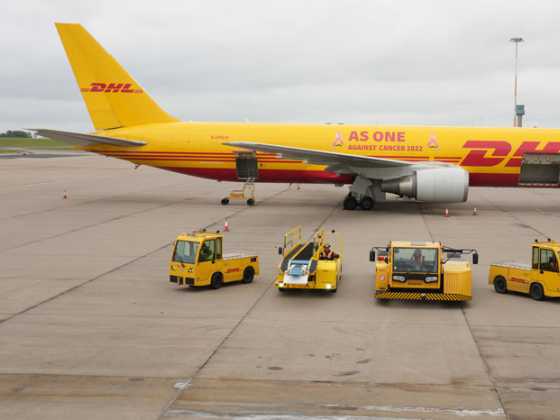Getting on two wheels
The Motor Cycle Industry Association’s Samantha Tyson explains why two wheels can be better than four when it comes to choosing a green vehicle for your fleet
 There has never been a better time to get out and about on a bike, scooter or moped. A powered two-wheeler is one of the most convenient and cost-effective modes of transport and for businesses who are looking for a greener fleet, two-wheels provides a solution.
There has never been a better time to get out and about on a bike, scooter or moped. A powered two-wheeler is one of the most convenient and cost-effective modes of transport and for businesses who are looking for a greener fleet, two-wheels provides a solution.
Around 3.5 million people hold licences that entitle them to ride and with an ever-expanding choice of bikes including electric machines it is worth considering the environmental and cost benefits that might persuade an organisation to purchase a fleet of motorbikes.
Lower capacity bikes are becoming increasingly popular and the sales figures for 2009 revealed that there appears to be a greater demand for the smaller capacity bikes, which are ideal for urban driving and can offer a practical cost-effective form of transport. Seven of the top ten selling models in 2009 featured bikes in the < 125 cc capacity range and include the Honda CBF 125 M and the Yamaha YBR 125.
Congestion beating
Riding a bike or scooter doesn’t add to congestion and can in fact contribute to lowering the costs to businesses. Increased use of bikes and scooters can help to reduce traffic congestion and journey times are often quicker than other modes of transport, ideal if your business depends on getting somewhere quick. As they don’t stand in traffic jams with their engines idling it means that the total CO2 emitted will always be lower for any given journey.
When bikes are actually in use they are less polluting than cars, especially when using smaller capacity commuter bikes. The average CO2 is 110g/km for fleet cars compared to 70g/km for smaller bikes. Motorcycles have a clear advantage over cars in terms of carbon dioxide (CO2) emissions and the smaller machines that dominate the urban/commuter sector tend to have CO2 emissions per kilometer of less than half those of the average car due to their far greater fuel economy. (Government’s Motorcycle Strategy of 2005)
Cost effective
Using a bike or scooter is a cost-effective form of transport. A You Gov survey carried out in 2009 revealed that 60 per cent of motorcycle commuters spent less than £10 on their weekly commute.
There is continued public interest in biking, in particular the key role that motorcycling plays in practical transportation. There are 1.5 million active riders and the government’s statistics reveals that over half (52 per cent) of all motorcycle trips in 2008 were made for the purpose of commuting, compared to just one-third (34 per cent) of bicycle journeys and one-fifth (22 per cent) of car journeys. The National Travel Survey (2008) also found that the average motorcyclist uses their bike as their main mode of transport for over one-third of all trips, making eight motorcycle trips a week, and travelling an average of 80 miles.
The MCI’s further analysis of the National Travel Survey found that:
- the average commute is 8.7 miles/27 minutes
- the average business trip is 19.4 miles/38 minutes
- the average bicycle trip is 2.6 miles/20.3 minutes
- the average motorcycle trip is 9.75 miles in 23 minutes
These statistics reveal that the average commute of almost nine miles is over three times as long as the average bicycle ride, which could be quite a physical stretch for many people and also quite time consuming. With the average business trip reaching around 20 miles – a bicycle would not be a realistic option. However, either of these trips would be a comfortable journey on a powered-two wheeler.
Electric motorcycles
One of the greenest forms of transport is the electric motorcycle. Environmental and cost saving benefits can be achieved by choosing to use an electric motorcycle. There are no emissions at point of use and they are also quiet, reducing noise-pollution.
The financial benefits are very impressive. It costs as little as a penny per mile to run an electric motorbike. The duty paid on electricity is substantially lower than the duty paid on petrol. The bikes are exempt from road tax and the London congestion charge. There are many places where you can park for free in London and in some boroughs you can park on the pay-and-display meter parking for free.
Getting started
So, if you don’t have a licence and want to find out more about getting on two-wheels the Motor Cycle Industry Association is running a national campaign to help people take their first leather clad steps into the world of two-wheels.
The Get On campaign is offering people the chance to experience biking for free. All you need to do is go online at www.geton.co.uk to find a local participating dealer and book your free one-hour taster session.
Motorcycles and scooters are the best way to beat the ongoing credit crunch and turn business trips or commutes into a joy. Two wheels will let you move through traffic, with ease. Not only that, in London all bikes, scooters and mopeds are exempt from congestion charge and can also use bus lanes.
For more information
Web: www.mcia.co.uk






